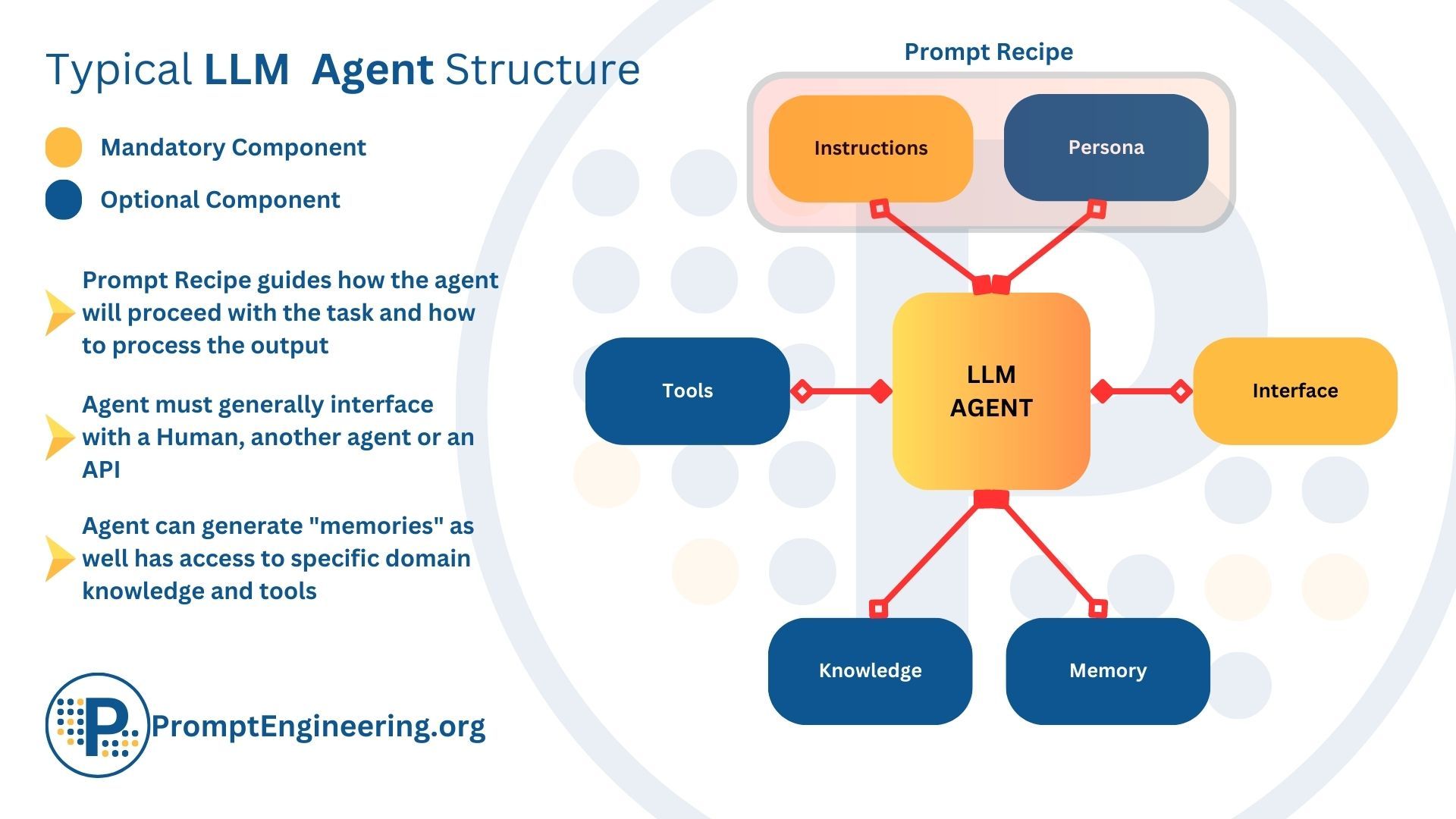LLM-based Agentic Reasoning Design Pattern
Jump to navigation
Jump to search
A LLM-based Agentic Reasoning Design Pattern is a software design pattern that focuses on integrating Large Language Models (LLMs) into the design of agent-based systems to enhance agentic reasoning.
- Context:
- It can (typically) leverage the natural language processing strengths of Large Language Models to facilitate complex decision-making and communication in Multi-Agent Systems.
- It can (often) be utilized in the development of Intelligent Personal Assistants, Chatbots, and other applications requiring sophisticated interaction with users or other agents.
- It can (often) incorporate machine learning techniques for adapting the behavior of agents based on interactions and feedback.
- It can help to create agents that can understand and generate natural language, making them more accessible and useful for human users.
- It can include methodologies for integrating LLMs with traditional Agent-Oriented Programming paradigms.
- It can address challenges such as context understanding, maintaining a conversational state, and generating coherent and relevant responses in agent interactions.
- ...
- Example(s):
- An agent design pattern that uses a GPT-4 model to interpret user requests and generate actions in a smart home environment.
- A customer service agent design pattern where the agent uses an LLM to understand customer queries and provide informative responses or escalate issues appropriately.
- A collaborative agent design in a project management tool that employs LLM to suggest actions, generate reminders, and facilitate communication between human team members.
- ...
- Counter-Example(s):
- A Sensor-Actuator Control Design Pattern, which focuses on direct interaction with the physical world through sensors and actuators, without involving sophisticated language-based reasoning.
- A Data Mining Pattern, which is primarily concerned with extracting patterns and knowledge from large datasets, not necessarily involving natural language interaction or decision-making based on language understanding.
- See: Natural Language Processing, Agent Communication Language, Cognitive Architecture, Human-Computer Interaction.
References
2023
- https://promptengineering.org/what-are-large-language-model-llm-agents/
- QUOTE:

- NOTES:
- LLM-based Agentic Reasoning Design Patterns serve as templates to integrate Large Language Models (LLM) into autonomous agents, guiding the development of AI systems capable of complex reasoning and decision-making.
- These design patterns facilitate the crafting of prompts that enable LLM agents to exhibit goal-oriented behaviors, leveraging the model's linguistic capabilities to understand tasks, generate responses, and take actions within specified domains.
- By embodying best practices in prompt engineering, LLM-based Agentic Reasoning Design Patterns enhance the agents' ability to reason autonomously, making logical connections, and solving problems through advanced language understanding and generation.
- The patterns provide a framework for equipping LLM agents with varying degrees of autonomy, from reactive to proactive, by systematically incorporating knowledge bases, memory, and reasoning tools into the design.
- They emphasize the importance of carefully designed prompts that encode personas, instructions, permissions, and context, enabling seamless human-AI collaboration and the efficient direction of LLM agents towards achieving complex goals.
- LLM-based Agentic Reasoning Design Patterns advocate for the integration of external tools and services, allowing agents to extend their capabilities beyond language processing, thereby enabling a broader range of autonomous actions.
- The design patterns contribute to the evolution of AI by outlining methods for transitioning LLMs from passive language models to active, semi-autonomous agents that can participate in dialogues, execute tasks, and collaborate with humans across a wide array of applications.